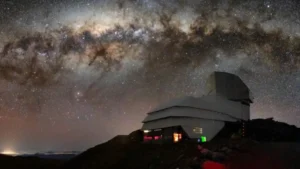Earth may be the “blue planet” — but for years, it didn’t even have the reputation as the bluest planet in the solar system.
That status belonged to Neptune, the eighth planet from the sun, which appeared to glow like a cobalt marble in the void.
Not anymore.
The Voyager 2 sent us the first images of Neptune and its ice-giant neighbor, Uranus, in the late 1980s. But further surveys by the Hubble Space Telescope and the Very Large Telescope (VLT) recently changed the game.
Uranus still looks pretty much like the same pale blue orb. But Neptune displays a similar muted hue rather than the intense cerulean we originally associated with it.
The key difference is that Voyager 2’s camera equipment observed the two planets in single wavelengths of light at a time. As a result, every image of each planet was a composite built from several single-color observations.
Too blue
Researchers at the time knew of the color distortion — but that fact slowly faded.

Image: Patrick Irwin/University of Oxford
“Although the familiar Voyager 2 images of Uranus were published in a form closer to ‘true’ color, those of Neptune were, in fact, stretched and enhanced, and therefore made artificially too blue,” said lead study author Patrick Irwin, a planetary physicist at the University of Oxford. “Even though the artificially saturated color was known at the time — and the images were released with captions explaining it — that distinction had become lost over time.”
To obtain true-color images of Neptune and Uranus, Irwin’s team used the Hubble Space Telescope’s Imaging Spectrograph (STIS) and Wide Field Camera 3 (WFC3). They also sourced data from the Multi Unit Spectroscopic Explorer (MUSE) on the VLT.
The updated instruments create images in which each pixel is a continuous spectrum of colors, correcting the Voyager 2 composites.
Why Uranus seems to change color
But the work wasn’t just the astronomical equivalent of melting down crayons. The results also contained insights into why Uranus appears to change color during its 84-year solar orbit.
Previous observations showed the planet looks slightly greener during its summer and winter solstices. That’s when the sun beats down directly on one of the planet’s poles, an area covered with a “hood” of icy methane. Irwin’s team thinks the methane produces a red or green glow under direct light. The layer doesn’t exist at the planet’s equator, which faces the sun during spring and fall.
“The misperception of Neptune’s color, as well as the unusual color changes of Uranus, have bedeviled us for decades,” said Heidi Hammel of the Association of Universities for Research in Astronomy. “This comprehensive study should finally put both issues to rest.”






